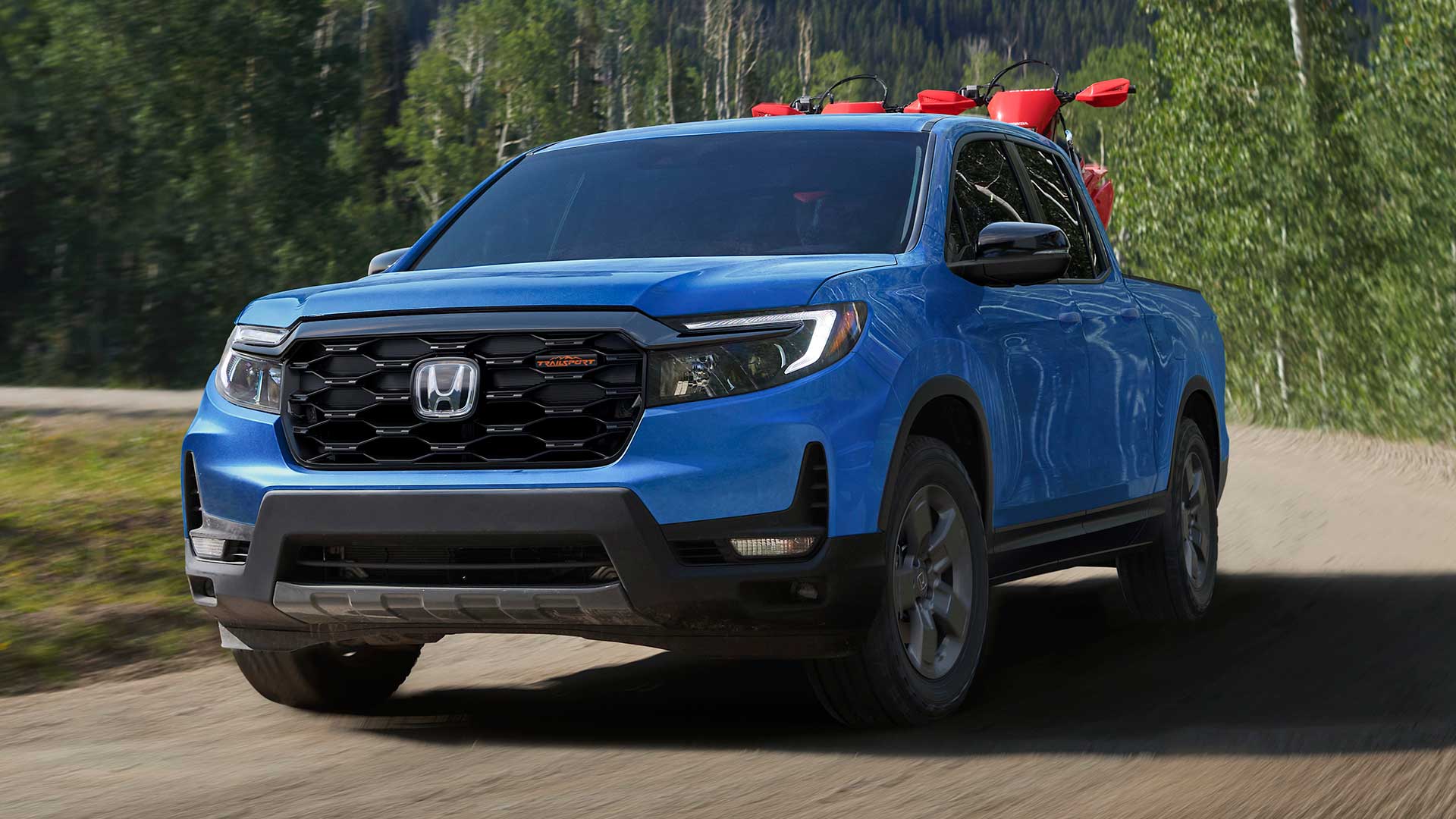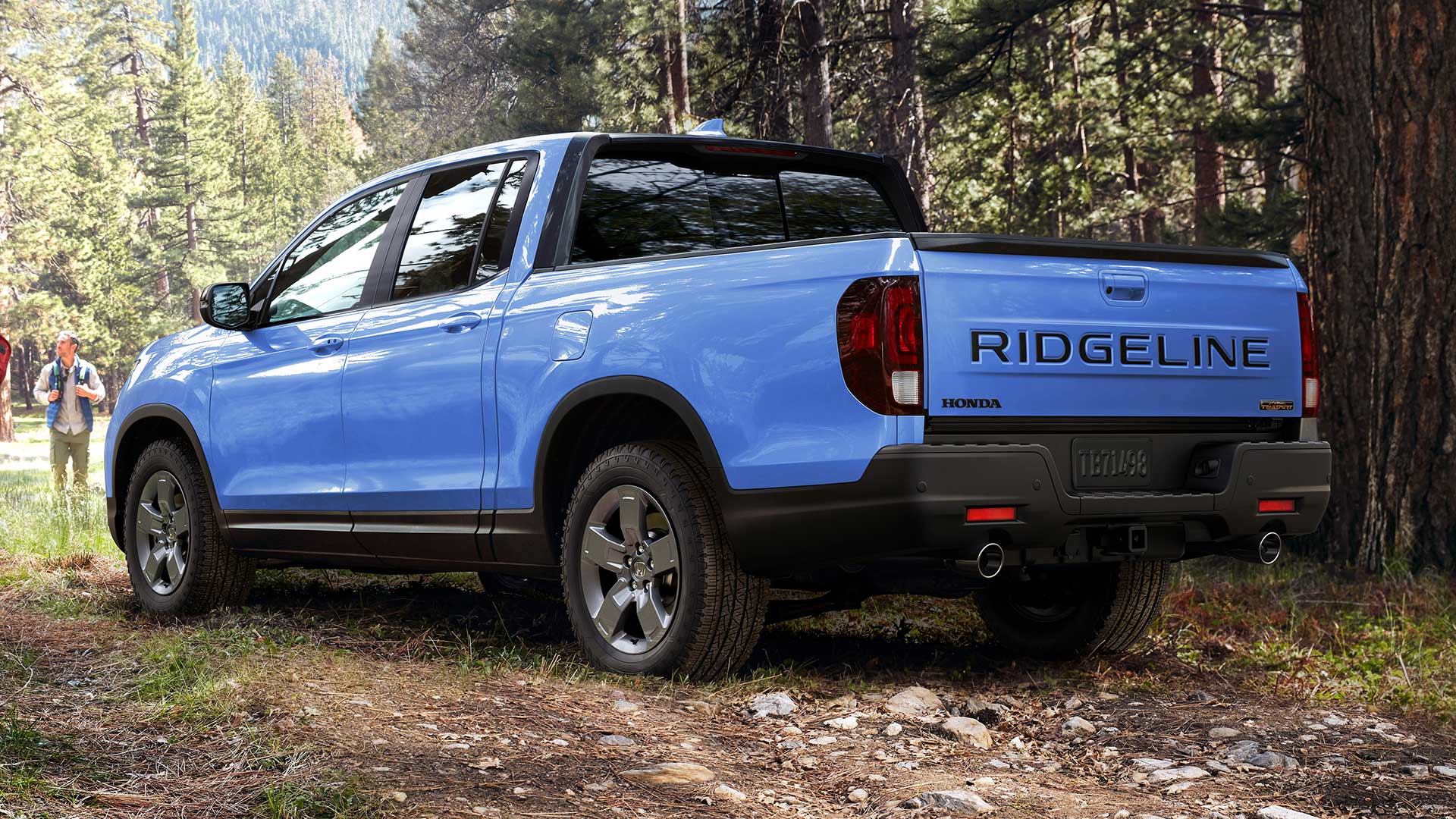2010 Volvo XC60
For more than a generation, Volvo has built its American reputation on two things: safety and its premium station wagons. Even when wagons fell out of favor at other brands, they remained an attraction for Volvo purists. But, some of those fans did defect to the Volvo XC90 Crossover. Now, with the all-new XC60, it’s possible that a lot more just might be tempted to follow suit.
The 2010 Volvo XC60 may be a late entry into the premium compact-to-midsize crossover race, but don’t expect this stylish and sporty utility to trail behind for too long.
The XC60 will compete directly with the BMW X3, the Acura RDX, and the Mercedes Benz GLK.
Styling hints of the XC70 and XC90, but from there the familiar Volvo DNA runs a little wild. The modified trapezoidal grille is flanked by dramatically flared headlamps.
The XC60’s wedge-like forward-leaning profile makes this crossover look like it’s ready to pounce. A muscular shoulder line, lower body cladding, and a coupe-like greenhouse all add to its athletic presence, as do the 18 or 19-inch wheels.
Further distinction comes from a well-sculpted back-end. But the most eye-catching cue is, no doubt, the exaggerated boomerang-like LED tail lamp design.
Offered currently as a single T6 all-wheel-drive model, the XC60 is moved by Volvo’s familiar 3.0-liter turbocharged inline-6, producing 281 horsepower and 295 pound-feet of torque. Max towing capacity is a reasonable 3,300 pounds.
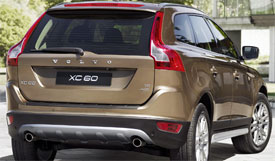 Power is managed by a six-speed automatic with manual mode which feeds Volvo’s latest Haldex 4 all-wheel drive system with Instant Traction torque transfer. For the more adventurous, Hill Descent Control is also available.
Power is managed by a six-speed automatic with manual mode which feeds Volvo’s latest Haldex 4 all-wheel drive system with Instant Traction torque transfer. For the more adventurous, Hill Descent Control is also available.
But this wouldn’t be a Volvo road test without a truly novel safety breakthrough. That would be Volvo’s City Safety System. City Safety is a low-speed rear collision avoidance system that utilizes an infrared laser in the rear view mirror to detect a stopped car ahead. City Safety will automatically apply the brakes at speeds up to 18 miles-per-hour to prevent a crash.
We don’t recommend you trying City Safety out just for grins like we did since it doesn’t activate until the last possible second. And stops are quite abrupt and really get your attention.
At the track, the XC60 also impressed us with its quickness. 0 to 60 in just 6.7 seconds and the quarter-mile in 15.2 seconds at 97 miles-per- hour. This crossover has a strong, smooth pull all the way up to the redline. Shifts, however, were not as quick as we would have liked them to be.
Sharing some chassis elements with the V70 and S80, suspension is front MacPherson strut/rear multi-link, with a three-mode active chassis option coming later. Aiding cornering now is an enhanced Dynamic Stability Control System, Roll Stability Control, and for towing maneuvers, new optional Trailer Stability Assist.
Maybe we expected too much, since this is a luxury car, but ride definitely rules over handling. The XC60 exhibits a top-heavy feel and reached its limits somewhat quickly.
Braking redeemed the XC60. Four-channel all-disc ABS with Brake Assist delivered average stops from 60 of a short 127 feet. They were solid and straight with minimal nose dive.
On everyday roads, the ride was soft and plush, perfect for Monday-through-Friday commutes. But with 9.1 inches of ground clearance, taking the XC60 off the pavement for a weekend adventure does not have to be a second thought.
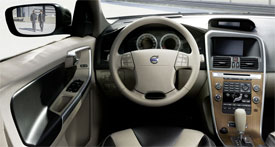 The interior of the five-passenger XC60 is a continuation of the clean and modern Scandinavian design we liked so much in the XC70 and C30. Gauges and controls are smartly laid-out and exude an artful sophistication.
The interior of the five-passenger XC60 is a continuation of the clean and modern Scandinavian design we liked so much in the XC70 and C30. Gauges and controls are smartly laid-out and exude an artful sophistication.
The XC60’s seats are well-contoured and supportive, featuring stitched seams and optional heat.
The slim, floating center stack design includes an available navigation screen that’s slightly angled toward the driver. It includes real-time traffic, and remote control.
There’s also a Rear Park Assist Camera packaged with the Nav system.
And not to be forgotten, our tester’s upgraded Dynaudio Premium Sound System with surround sound, for memorable listening enjoyment.
Other characteristic Volvo safety gear includes six airbags, anti-whiplash seats, and optional Lane Departure Warning.
The rear bench seat is fit for three, but it’s not the most spacious we’ve seen. Its 40/20/40 split, however, is family friendly, as are a pair of optional integrated child booster seats.
Cargo room is a generous 30.8 cubic feet with the seats up, and a very competitive 67.4 with the seats down.
Government Fuel Economy for this crossover is an underwhelming 16 city/22 highway on premium gas. We managed to get 20.6 miles-per-gallon in real-world driving.
Base pricing for the XC60 starts at $38,025. That’s less than a BMW X3, but more than the Acura RDX and the Mercedes-Benz GLK.
The eye-catching 2010 Volvo XC60 offers everything an upscale family could wish for - innovative safety, strong performance, true multi-purpose capabilities, and a comfortable, sophisticated cabin. For a company steeped in the tradition of the station wagon, the XC60 is a nice step up that doesn’t’ forget its roots.
Specifications
- Engine: 3.0-Liter Turbocharged Inline-6
- Horsepower: 281
- Torque: 295 Lb Feet
- 0-60 MPH: 6.7 Seconds
- 1/4 Mile: 15.2 Seconds @ 97 MPH
- 60-0 MPH: 127 Feet
- EPA: 16 MPG City/ 22 MPG Highway
- Mixed Loop: 20.6 MPG
2024 Honda Ridgeline TrailSport
It Does Truck-Like Things Better Than Ever
Honda brought something truly unique to the pickup truck scene when their mid-size Ridgeline debuted for 2006. In 2017, it moved towards becoming a little more true truck-like, both in form and capability, now with yet another step in that direction for 2024. So, let’s see if the Ridgeline is really hitting its stride.
For 2024, it’s all about making this Honda Ridgeline better than ever. There are styling tweaks outside, along with tech and functional improvements inside, but the biggest news is the Ridgeline has now joined Honda’s TrailSport family of off-road inspired vehicles. This more-true-trucklike, second-gen Ridgeline been around since 2017, receiving periodic updates over the years; but joining the TrailSport family is the biggest leap yet.
Primarily, the TrailSport transformation includes General Grabber all-terrain tires, mounted on new Pewter Gray 18-inch wheels, steel underbody protection, and retuning the strut front, and multi-link rear suspension for added wheel articulation. And while we always appreciate the additional traction of off-road tires, the Ridgeline’s standard i-VTM4 all-wheel drive, with Intelligent Traction Management and snow, sand, and mud settings, was already quite capable of handling all but the most extreme off-roading, ground clearance of just 7.6 inches being it’s only real hinderance.
A 3.5-liter V6 remains under the hood as it has since the Ridgeline debuted for 2006; the current version outputs 280 horsepower and 262 lb-ft of torque, plenty enough muscle to handle its 5,000-lbs. towing capacity. A nine-speed automatic transmission with paddle shifters and bevy of push and pull buttons on the console replaced the six-speed automatic back in 2020.
In addition to adding TrailSport capability, a big focus for this update was making it more user-friendly inside, starting with the central touchscreen growing from 8 to 9 inches. It also gets faster processing speeds, menus have been simplified, and the native navigation system is improved with better graphics. It’s accompanied by a new digital instrument cluster, along with an upgraded center console with more storage space. Unique TrailSport touches include heavy duty floormats, leather-trimmed seats, orange stitching throughout the cabin, and orange ambient lighting.
The Ridgeline continues to offer things available nowhere else in the pickup truck market.
Exterior styling doesn’t exactly shout “macho big rig coming your way,” but the more vertical face and larger grille that arrived for 2021, along with this year’s added TrailSport elements, do continue to toughen up the Ridgeline’s image. The 5’4” bed remains highly functional with no large wheel well intrusions, multiple tie-downs points, lighting and even speakers. And of course, the Ridgeline continues to offer things available nowhere else in the pickup truck market, like the dual-action tailgate, and large, lockable, drainable, underbed storage. Not to mention being able to drive around in true car-like comfort, something we took full advantage of on our way to our Mason Dixon Dragway test track.
There was great grip off the line, with full power arriving smoothly but quickly, helping us to get to 60 in 7.0 seconds flat, a tenth quicker than the last Ridgeline we tested. That power delivery stayed fairly consistent the whole way down the track, barely interrupted by the nine-speed automatic’s smooth shifting. Our best quarter-mile run was 15.5 seconds at 90 mph.
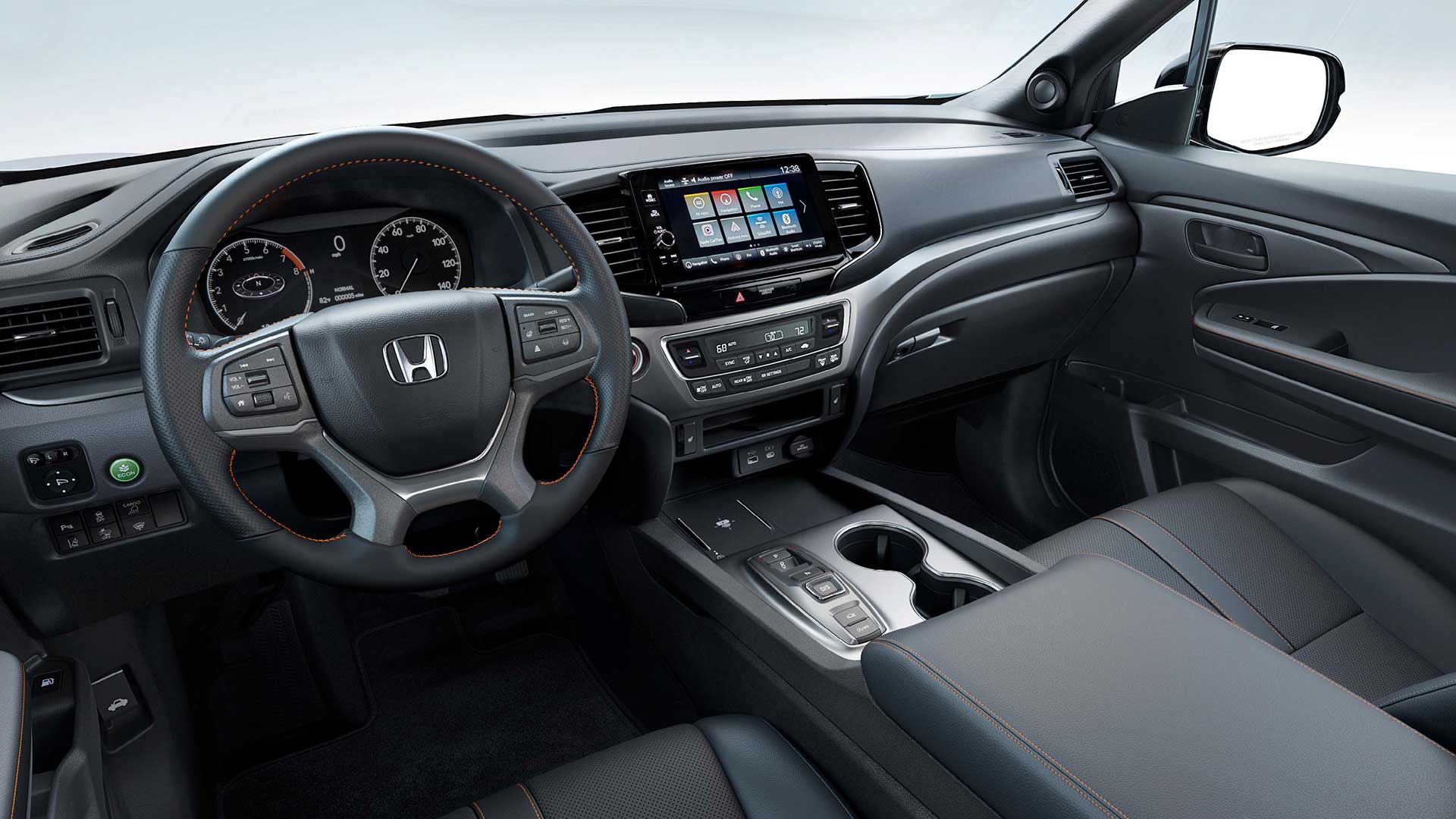
The revised suspension and knobbier tires didn’t really seem to add or detract from handling prowess, as it felt as solid, nimble, and car-like as it always has through our cone course. Perhaps a little less stiff than before, but good feedback, tight steering, and minimal body roll for a pickup, made for a very confidence inspiring experience. In our braking test, we stopped in a respectable average of 123 feet from 60, with only moderate amounts of nosedive and good feel through the pedal.
There is, however, a slight reduction in Government Fuel Economy Ratings with the all-terrain tires; 18-City, 23-Highway, and 20-Combined, our average, right on, at 20.4 mpg of Regular. That’s a slightly below average Energy Impact Score of 14.9 barrels of yearly oil use, with CO2 emissions of 7.4 tons.
TrailSport pricing falls in line just under the Ridgeline’s top Black Edition trim with a starting price of $46,375, about five grand over a base Ridgeline Sport.
So, whether you consider the Honda Ridgeline to be a “real” truck or not, this ruggedly smooth 2024 TrailSport does truck-like things better than ever. And we’re not just talking about the slight upgrade in off-road performance, we’re talking about a flexible bed to help you get chores done, and the ability to tow or haul with comfort and flexibility other trucks can only wish for. It’s why the Ridgeline brings more first-time buyers to Honda than any other vehicle, and why it continues to be a great choice in the growing midsize truck realm.
Specifications
- Engine: 3.5-liter V6
- Transmission: 9-speed automatic
- Horsepower: 280
- Torque: 262 lb-ft
- EPA: 18 City | 23 Highway | 20 Combined
- 0-60 mph: 7.0 seconds
- 1/4 Mile: 15.5 seconds at 90 mph
- 60-0 Braking (avg): 123 feet
- MW Fuel Economy: 20.4 mpg (Regular)
- Max Towing Capacity: 5,000-lbs








